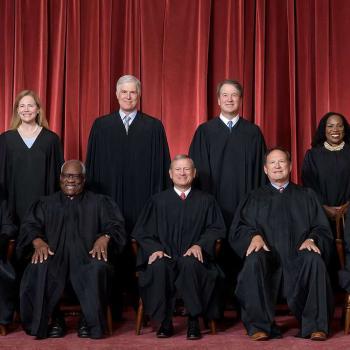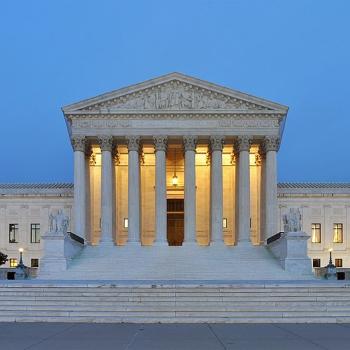Also, when is a menorah a menorah, and when is a crèche a crèche, and when are the Ten Commandments directives given to the Jews by God on Mt. Sinai? These questions, which might seem peculiar in the real world, are perfectly ordinary in the wild and wacky world of Establishment Clause jurisprudence, where in one case (Lynch v. Donnelly, 1984) the Supreme Court declared, with a straight judicial face, that a display featuring the baby Jesus, Mary, Joseph and the wise men conveyed a secular, not a religious message.
In the latest chapter of this odd project of saving religion by emptying it of its content, Justice Anthony Kennedy, writing for a plurality in Salazar v. Buono, ordered a district court to reconsider a ruling that Congress had impermissibly promoted religion by devising a plan designed to prevent the removal of a cross standing in the Mojave National Preserve. The cross had originally been erected in 1934 by the Veterans of Foreign Wars to commemorate American soldiers who had died in World War I. In 2002, Frank Buono, a retired Park Service employee, filed suit alleging a violation of the Establishment Clause and “sought an injunction requiring the government to remove the cross.”
In litigation unfolding in at least four stages, the District Court and the Appellate Court of the Ninth Circuit determined that “a reasonable observer would perceive a cross on federal land as governmental endorsement of religion.” In response, Congress took several actions, including designating the cross and the adjoining land a national memorial and transferring ownership of the land in question to the V.F.W. in exchange for land located elsewhere in the preserve. Turning again to the courts, Buono asked for an injunction against the transfer; the District Court granted it, concluding that “the transfer was an attempt by the Government to keep the cross atop Sunrise Rock and so was invalid.” The issue was Congress’s motive. The effect of what it had done was obvious: the cross now stood on private land, which meant, at least theoretically, that there was no longer an Establishment Clause violation because a private party, not the government, was speaking.
But the question remained: did the transfer “cure” the violation or did it, as Justice John Paul Stevens contended in dissent, extend and re-perform it? In a paroxysm of patriotism, Justice Anthony Kennedy has taken the Christianity out of the cross and turned it into an all-purpose means of marking secular achievements.
Now the fun and crazy stuff begins. Kennedy denies that the “emplacement” of the cross was accompanied by any intention “to promote a Christian message.” It was “intended simply to honor our Nation’s fallen soldiers.” (At oral argument Peter Eliasberg, an ACLU lawyer, observed, “There is never a cross on a tombstone of a Jew.”) Therefore, Kennedy reasoned, Congress had no “illicit” intention either; it merely sought a way to “accommodate” (a term of art in Establishment Clause jurisprudence) a “symbol often used to honor and respect those whose heroic acts, noble contributions and patient striving help secure an honored place in history for this Nation and its people.”
Notice what this paroxysm of patriotism had done: it has taken the Christianity out of the cross and turned it into an all-purpose means of marking secular achievements. (According to this reasoning the cross should mark the winning of championships in professional sports.)
It is one of the ironies of the sequence of cases dealing with religious symbols on public land that those who argue for their lawful presence must first deny them the significance that provokes the desire to put them there in the first place. It has become a formula: if you want to secure a role for religious symbols in the public sphere, you must de-religionize them, either by claiming for them a non-religious meaning as Kennedy does here, or, in the case of multiple symbols in a park or in front of a courthouse, by declaring that the fact of many of them means that no one of them is to be taken seriously; they don’t stand for anything sectarian; they stand for diversity.
So you save the symbols by leeching the life out of them. The operation is successful, but the patient is dead.
HT: FWS











